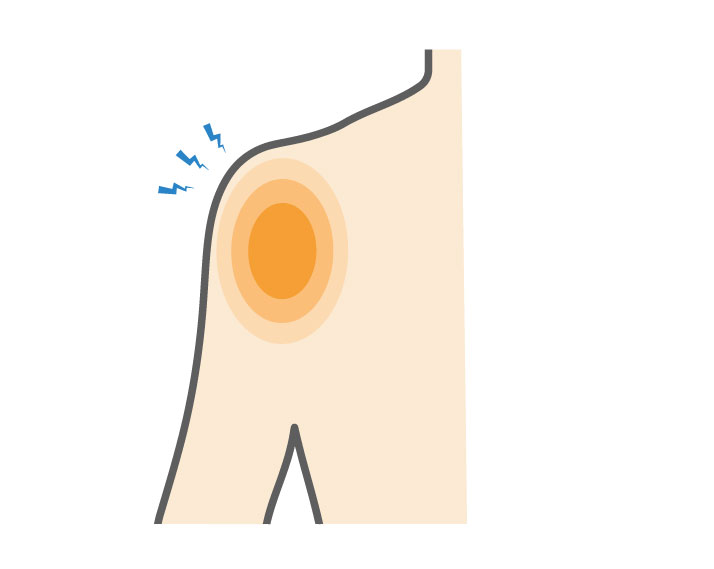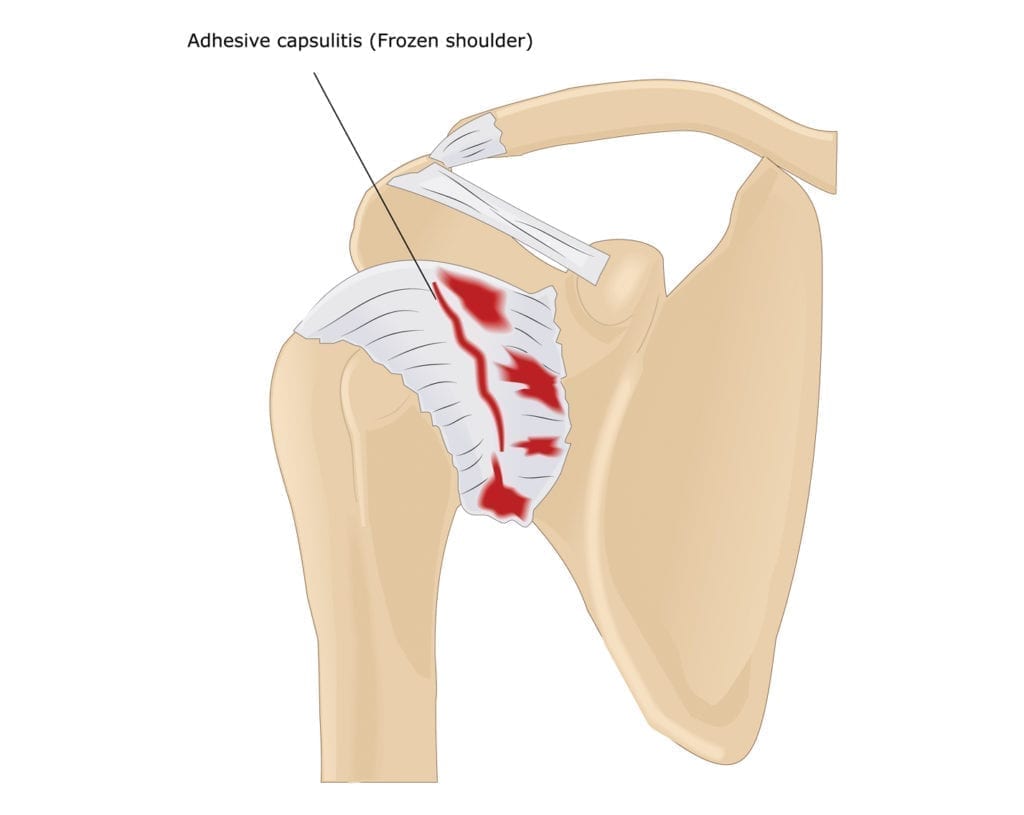A frozen shoulder, also called adhesive capsulitis is a condition where the shoulder becomes painful and stiff. It usually progresses through 3 stages:
1. Freezing
This is the initial and most painful stage. This usually results in a slow loss of motion. This stage usually lasts 2-6 months.
2. Frozen
In this second stage the pain lessens but the loss of motion persists. This stage can last from 3-6 months.
3. Thawing
In this last phase motion slowly improves. This stage can last from 3- 12 months.



